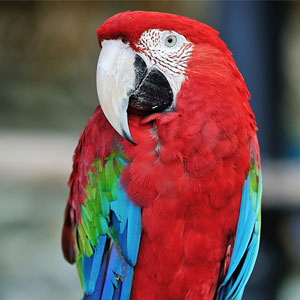
Understanding Your Bird's Body Language
Body language can tell you a lot about other people, and it can tell you a lot about your bird too! Understanding your bird's body language is beneficial for knowing what your bird is trying to communicate to you.
Do Birds Have a Language?
When it comes to how do you read a bird's body language, the answer is birds use a variety of ways to communicate through body language. Birds often use their beaks, eyes, heads, wings, and tails. Paying attention to your bird's body language can help you indicate when your bird is sick, happy, afraid, or angry.What Do Pet Bird Sounds Mean?
Listening to your bird's vocalizations is probably one of the easiest things to interpret. If he is singing, talking, or grinding his beak, he is probably happy and healthy. However, if he is growling, he is discontent about something.Why Do My Birds Pupils Get Big and Small?
Birds can control the dilation of their pupils, so watching their eyes for current emotions can tell you if your bird is aggressive, afraid, or excited. When your bird's pupils enlarge and shrink rapidly, this is called "pinning" or "flashing." Although this can look alarming at first, it's important to gauge this action within the current context. Eye pinning can be a sign of happiness, excitement, or aggression.Why Does My Parrot Fan His Tail?
A bird's tail will often give insight of how your bird is feeling. A wagging tail often communicates happiness, while fanning tail feathers might show strength or aggression. Pay close attention if your bird is bobbing his tail. This will often mean that your bird is having trouble breathing, and it may be due to overexertion or a respiratory problem.Pet Bird Body Posture
Bird body posture is another indicator of current mood. If your bird's body appears relaxed and his head is at attention, he is content. However, if his body is rigid and attentive, your bird is stating ownership of his territory. If your bird is rigid and crouching with his head down, flared or ruffled feathers, eyes pinning, he is cautioning you. Don't provoke your bird in this situation, as he won't hesitate to bite.Why Are My Parrots Wings Drooping?
Lastly, birds use their wings to communicate. Wing flapping is often a form of exercise or to receive attention. If your bird's wings are drooping, this is often a sign of exhaustion or bird illness.Understanding your bird's body language will help you gauge his mood and how he is feeling; ultimately, this will improve your relationship and interactions. The more time that you spend with your bird, the easier it will be to understand his body language. It is your responsibility to understand his body language so that you can care for his needs.
Discover More Pet Bird Tips!
How to Train a Bird Using Postive ReinforcementMy First Bird: What Kind of Bird Should I Get?
Dealing with Jealousy in Birds
Return to Bird Articles


